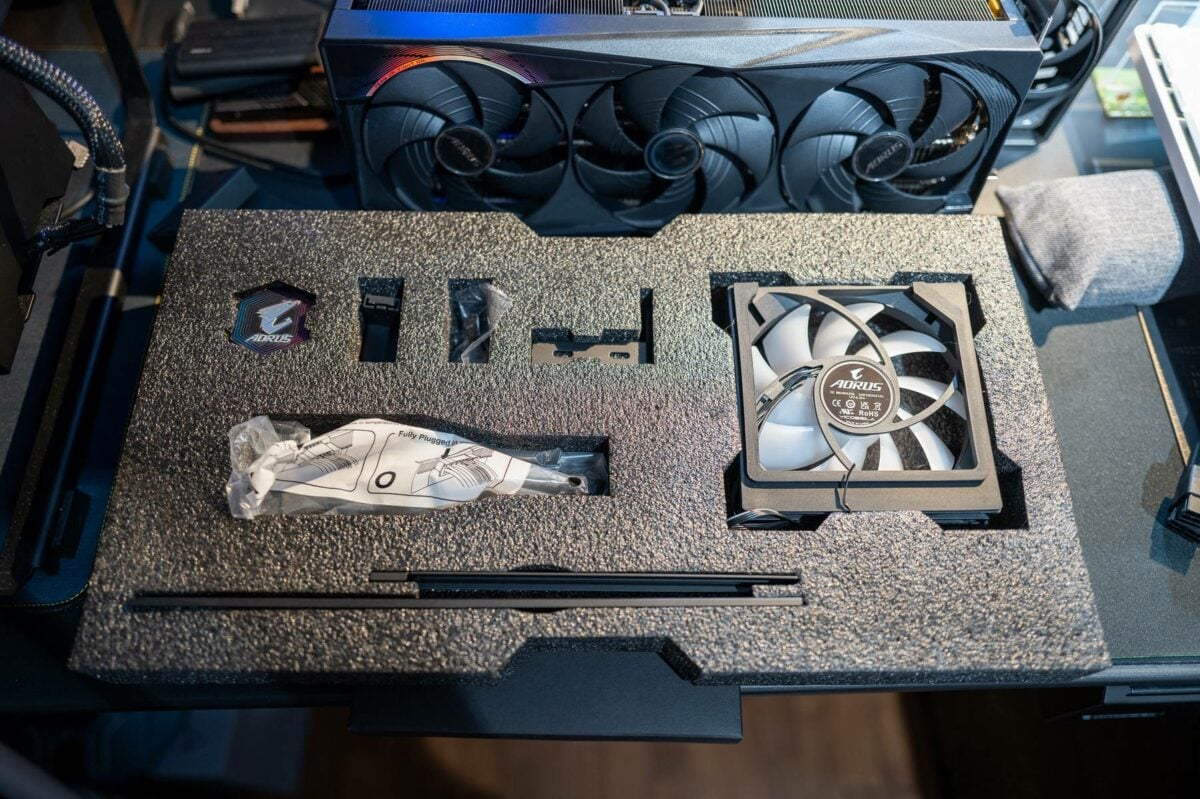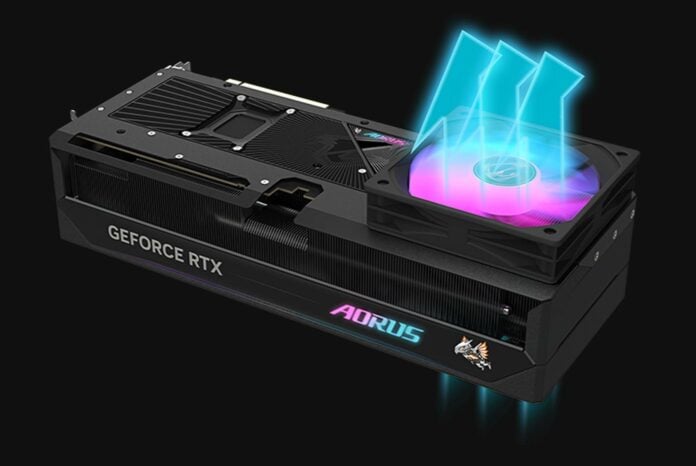Ever thought of adding an extra fan to your graphics card to improve its thermals? Well, Gigabyte had the same idea with its GeForce RTX 5090 and RTX 5080 Aorus Master. These cards come bundled with an extra 120mm fan and mount you can install on the backplate. This brings the total to four active fans – three in the front and one on the back.
From the looks of it, the fan mounting frame seems compatible with any 120mm size desktop case fan, making it possible to swap the included one with another model. Reparability aside, this opens the way to use high-quality fans like a Noctua for silence or a Phanteks for performance. Or maybe one of those flashy reverse ones featuring mirrors or screens.

Now whether this additional fan has any measurable impact on temperature and noise is hard to say without hands-on testing. But, since the user can choose when to install it, or not, noise shouldn’t be a concern. As for temperatures, aside from special scenarios, more air should equal lower temperatures. By how much? Likely a couple of degrees max, since a single fan can’t substitute a larger heatsink.
The thing that may sway many from using this optional fan however is the way you power and control it. For some reason, Gigabyte didn’t integrate a fan power header into its cards’ design, forcing you to use other means like your motherboard. This makes it a far less elegant solution than say Asus’ ROG Astral which simply just builds the fourth fan directly into the card. There is a certain charm to the optional customisation though.
This sort of innovation, however viable, does excite me. From the dual flowthrough on Nvidia’s Founders Editions to XFX’s magnetically attached fans, graphics cards have come a long way from the bare PCBs of the 3DFX Voodoo and GeForce 256.


